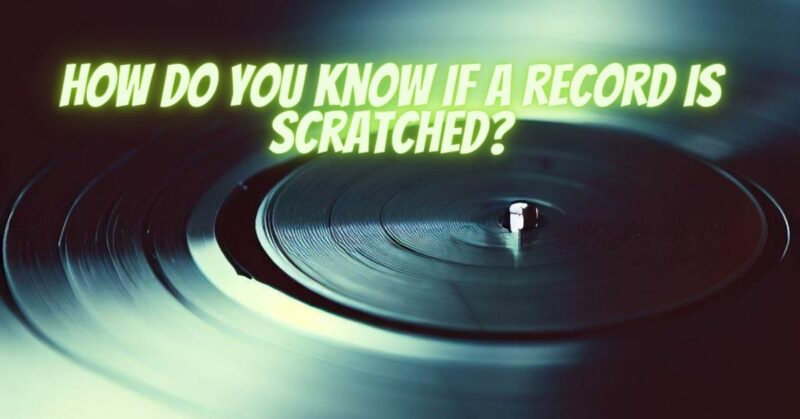Vinyl records, with their warm and nostalgic sound, continue to captivate music enthusiasts and collectors around the world. However, vinyl records are sensitive to mishandling and can be susceptible to scratches, which can impact sound quality and listening enjoyment. In this article, we will explore how to identify and assess scratches on vinyl records, as well as the potential consequences of such damage.
Identifying Scratches on Vinyl Records:
Scratches on vinyl records can vary in severity and appearance. Here are some signs to look for when identifying scratches:
- Visual Inspection: Hold the record under a bright light source and examine the surface carefully. Scratches may appear as visible marks or lines on the vinyl’s surface.
- Glossy Appearance: Light scratches may cause the affected area to have a slightly glossy or reflective appearance compared to the rest of the record.
- Audible Noise: Scratches can produce audible artifacts during playback, such as pops, clicks, or repetitive noises.
- Skipping or Jumping: Deep scratches or gouges can cause the stylus to skip or jump across the record, disrupting the playback continuity.
Assessing the Severity of Scratches:
Not all scratches on vinyl records have the same impact on sound quality. It is essential to assess the severity of the scratches to understand their potential effects:
- Light Surface Scratches: Light surface scratches may cause minimal or negligible impact on sound quality. These superficial scratches may be less audible during playback and may not significantly affect the listening experience.
- Deep Scratches: Deep scratches, especially those that extend into the grooves where the audio information is stored, can have a more pronounced effect on playback. They may cause audible pops, clicks, or distortions, potentially affecting the overall sound quality.
- Multiple Scratches in Close Proximity: When multiple scratches are concentrated in a specific area of the record, it can lead to continuous noise or repetitive disruptions during playback.
Consequences of Scratched Vinyl Records:
The consequences of scratches on vinyl records can vary depending on the severity and extent of the damage:
- Sound Quality: Mild surface scratches may have minimal impact on sound quality, while deep scratches can lead to audible pops, clicks, and distortions.
- Stylus Wear: Playing a scratched record can cause additional wear on the stylus (needle) due to the increased friction and pressure on the grooves.
- Record Value: Collectors and enthusiasts place a premium on well-preserved vinyl records. Extensive scratches can diminish the value of a record for collectors.
Identifying scratches on vinyl records is crucial for maintaining their playback quality and preserving their value. While light surface scratches may have a minimal impact on sound quality, deep scratches can lead to audible disruptions during playback. Regular cleaning, proper handling, and careful storage of vinyl records can help prevent unnecessary scratches and extend their lifespan.
If you discover scratches on your vinyl records, consider playing them on a high-quality turntable with a well-maintained stylus. In cases of severe damage or valuable records, seeking professional record restoration services may be an option. By treating your vinyl records with care and attentiveness, you can continue to enjoy the rich and timeless pleasure of vinyl playback for years to come.


